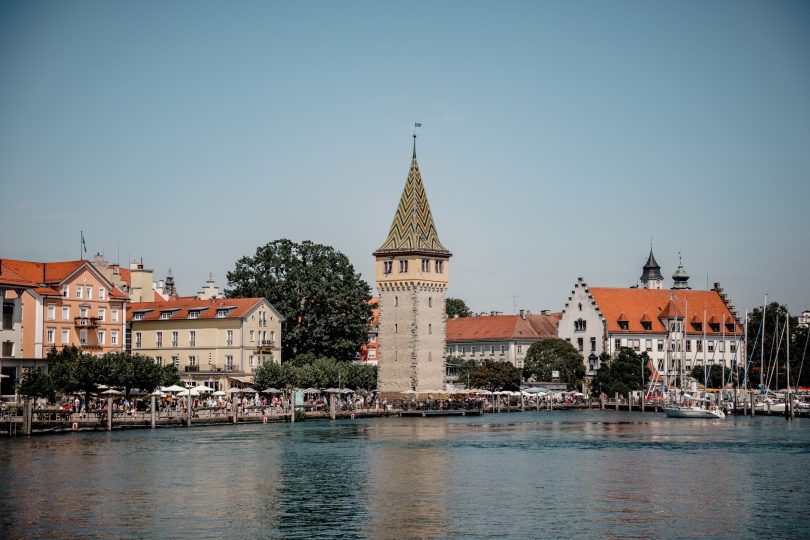
Magnificent castles, enchanting gardens and spectacular views: the so-called Bavarian Riviera in Lindau is one of the most beautiful destinations in the region. Around 30 noble villas are lined up along the almost six-kilometer-long stretch of shore.
Jewels of architecture
The building boom was triggered by the Bavarian Prince Luitpold, who acquired the “Villa Amsee” as his summer residence in 1848. Numerous nobles and upper middle-class citizens followed his example and built a luxurious residence on the shores of Lake Constance. Many of the architectural gems have been preserved to this day, some of which can be admired from the outside.
In 1922, the mainland communities of Aeschach, Hoyren and Reutin were incorporated into Lindau – since then, the Bavarian Riviera opposite the island has officially been part of the city’s municipal boundaries. More than two dozen historical buildings are located on its shores, inviting you to take a stroll through Lindau’s cultural and architectural history. These magnificent buildings were built by the upper middle classes and the nobility, who settled either directly on the shore or in more exposed places with a fantastic view of the lake and mountains. The villas not only bear witness to the luxurious lifestyle in the former imperial city, but also provide a vivid insight into the different architectural styles and epochs. From neo-renaissance buildings and neo-classical elements to art nouveau and forms of local style, everything is represented.
Glory of past centuries
Many buildings still exude the splendor of past centuries – they are well preserved and are now privately owned. This also means, however, that unfortunately only a part of the houses is open for the public. You have the best view from the water: With a little distance and the right perspective, you can look over the high hedges and admire the villas from a distance. It is up to you whether you book a classic boat tour, rent a motorboat or glide over the water with a SUP board. You can admire some of the villas:
- Villa Alwind: Georg Gruber had the villa with its four-story cubic main body built in 1852 as a summer residence. The dendrological park of the villa is a true eye candy.
Villa Lindenhof: Villa Lindenhof was built according to the plans of architect Franz Jacob Kreuter (1813-1889). Today, the east wing of Villa Lindenhof accommodates the museum “friedens räume”, which you can visit of course. - Hotel Bad Schachen with park beach bath: The history of the hotel Bad Schachen with its wonderful park beach bath goes back to the year 1474. At that time, the sulphur-iron spring there was developed into a small spa, which was constantly expanded in the following centuries. Stay overnight in the hotel, visit the hotel for high tea or go swimming in the art nouveau bath.
More villas: On the way from the Hotel Bad Schachen to the Villa Wacker, the magnificent buildings are lined up close together: You can admire the villas Wacker, Rasteck, Seewarte, Tannhof, Daumer as well as the Villa Elena, which has been preserved in its original state. On the basis the houses you can study the architectural styles from 1870 to 1910 – from neo-classicism and the neo-renaissance according to the Italian model to art nouveau and home style. Some of the villas can hardly be seen from the street, only the artistically designed garden portals allow a small insight.
Walk along the garden culture path
The Garden Culture Trail leads along the Bavarian Riviera through numerous green spaces and freely accessible parks. You can also discover some villas and estates on this tour – some of them even up close. The best place to start your walk is the Villa Alwind, which was first mentioned in a document in 1370 and today houses a public café and restaurant. The view of the magnificent garden with fountains and the lake is wonderful! We continue on to Lindenhofpark – one of the most important parks on the banks of the villa, whose roots go back to the 19th century. The stately Villa Lindenhof is part of the gardens – in its east wing is the museum “friedens räume” (peace rooms). Not far away is the Hotel Bad Schachen, whose history dates back to 1474. The adjoining Parkstrandbad Bad Schachen is a jewel of art nouveau and is a listed building in the historic preservation.






